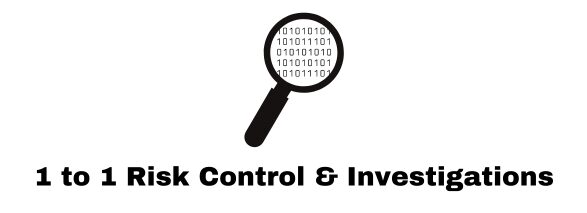405-458-5710
Confidentiality Guaranteed
405-458-5710
Confidentiality Guaranteed
You are Reading:
-
1 to 1 Risk Control & Investigations > Blog > Investigations > Uncovering Hidden Assets: Strategies for Success

Jul
Uncovering Hidden Assets: Strategies for Success
Understanding Hidden Assets: Hidden assets refer to property, money, or other valuables that an individual or entity deliberately conceals. These assets can be hidden for various reasons, such as avoiding taxes, evading creditors, or hiding wealth during a divorce or business dispute. Identifying and locating these hidden assets is crucial for ensuring financial transparency and justice.
Common Methods of Hiding Assets: There are several ways individuals and entities might hide assets. These include transferring property to relatives or friends, setting up offshore accounts, underreporting income, creating fictitious loans, or investing in precious metals and other tangible assets. Understanding these methods is the first step in uncovering hidden assets.
Financial Records and Documentation: Reviewing financial records and documentation is a fundamental step in finding hidden assets. This includes bank statements, tax returns, credit reports, and business records. Inconsistencies or unusual transactions in these documents can provide valuable clues about the existence of hidden assets. Investigators often use forensic accounting techniques to analyze financial records and identify discrepancies.
Asset Tracing and Forensic Accounting: Asset tracing involves following the money trail to locate hidden assets. Forensic accountants use various methods to trace assets, such as analyzing financial transactions, identifying unusual patterns, and following the flow of funds through different accounts. This process often involves working with financial institutions and legal authorities to obtain necessary records and documents.
Utilizing Technology and Data Analysis: Modern technology and data analysis tools play a crucial role in uncovering hidden assets. Investigators use specialized software to analyze large volumes of financial data and identify hidden assets. This includes data mining, pattern recognition, and network analysis techniques. Technology can help uncover complex asset concealment schemes that might be difficult to detect manually.
Public Records and Databases: Public records and databases are valuable resources for finding hidden assets. These include property records, business registrations, court filings, and other official documents. Investigators can use these records to trace ownership of assets, identify business interests, and uncover undisclosed financial relationships. Access to these records often requires working with legal authorities and following proper procedures.
Surveillance and Undercover Operations: In some cases, surveillance and undercover operations may be necessary to uncover hidden assets. This involves monitoring the subject’s activities, following their movements, and gathering evidence through covert means. Surveillance can provide valuable information about hidden properties, undisclosed business activities, and other concealed assets. However, these operations must be conducted legally and ethically.
Interviews and Interrogations: Conducting interviews and interrogations with relevant individuals can provide valuable insights into hidden assets. This includes interviewing the subject, their associates, employees, and other witnesses. Skilled investigators use various techniques to elicit information and uncover inconsistencies in their statements. Interviews must be conducted professionally and with respect for the individuals involved.
Legal Actions and Subpoenas: Legal actions and subpoenas are powerful tools for uncovering hidden assets. Courts can order individuals and entities to disclose their financial records and other relevant information. Subpoenas can compel banks, businesses, and other institutions to provide necessary documents. Legal actions can also include asset freezes, restraining orders, and other measures to prevent further concealment of assets.
Collaboration with International Authorities: In cases involving offshore accounts and international assets, collaboration with international authorities is crucial. This includes working with foreign governments, financial institutions, and legal bodies. International cooperation can help trace assets across borders, obtain necessary records, and enforce legal actions. Understanding international laws and regulations is essential for successful asset recovery.
Understanding Motivations and Behavioral Patterns: Understanding the motivations and behavioral patterns of individuals who hide assets is crucial for successful investigations. This includes recognizing signs of financial stress, identifying patterns of deceptive behavior, and understanding the psychological factors that drive individuals to conceal assets. Behavioral analysis can provide valuable insights into potential hiding places and methods.
Case Studies and Real-World Examples: Analyzing real-world case studies and examples can provide valuable insights into effective strategies for uncovering hidden assets. These case studies highlight successful investigations, common challenges, and best practices. Learning from the experiences of others can help investigators refine their techniques and improve their chances of success.
Challenges and Obstacles: Uncovering hidden assets is often fraught with challenges and obstacles. These include legal barriers, lack of cooperation from financial institutions, and sophisticated asset concealment schemes. Investigators must be prepared to navigate these challenges, adapt their strategies, and persevere in their efforts. Effective communication, collaboration, and persistence are key to overcoming obstacles.
Benefits of Finding Hidden Assets: Successfully uncovering hidden assets can have significant benefits. This includes recovering lost funds, ensuring fair settlements in legal disputes, preventing fraud, and promoting financial transparency. For businesses, it can also mean protecting assets, improving financial stability, and maintaining trust with stakeholders. The benefits extend beyond financial recovery to include legal, ethical, and reputational advantages.
Uncovering hidden assets is a complex and challenging task that requires a combination of skills, techniques, and resources. By understanding the methods of concealment, utilizing advanced technology, conducting thorough investigations, and collaborating with legal authorities, investigators can successfully locate hidden assets. The benefits of these efforts are far-reaching, ensuring financial justice, transparency, and accountability.
- AI
- Bug Sweeps
- Car Security
- Cyber Crime
- Cyber-Stalking
- Digital Forensics
- Fraud
- Geo-Political
- GPS Tracking
- Hidden Cameras
- Identity Theft
- Investigations
- Misinformation
- Mobile Device Forensics
- Mobile Device Security
- Operational Security
- Privacy
- Psychology
- Situational Awareness
- Social Media Investigations
- Stalking
- Surveillance
- Uncategorized
